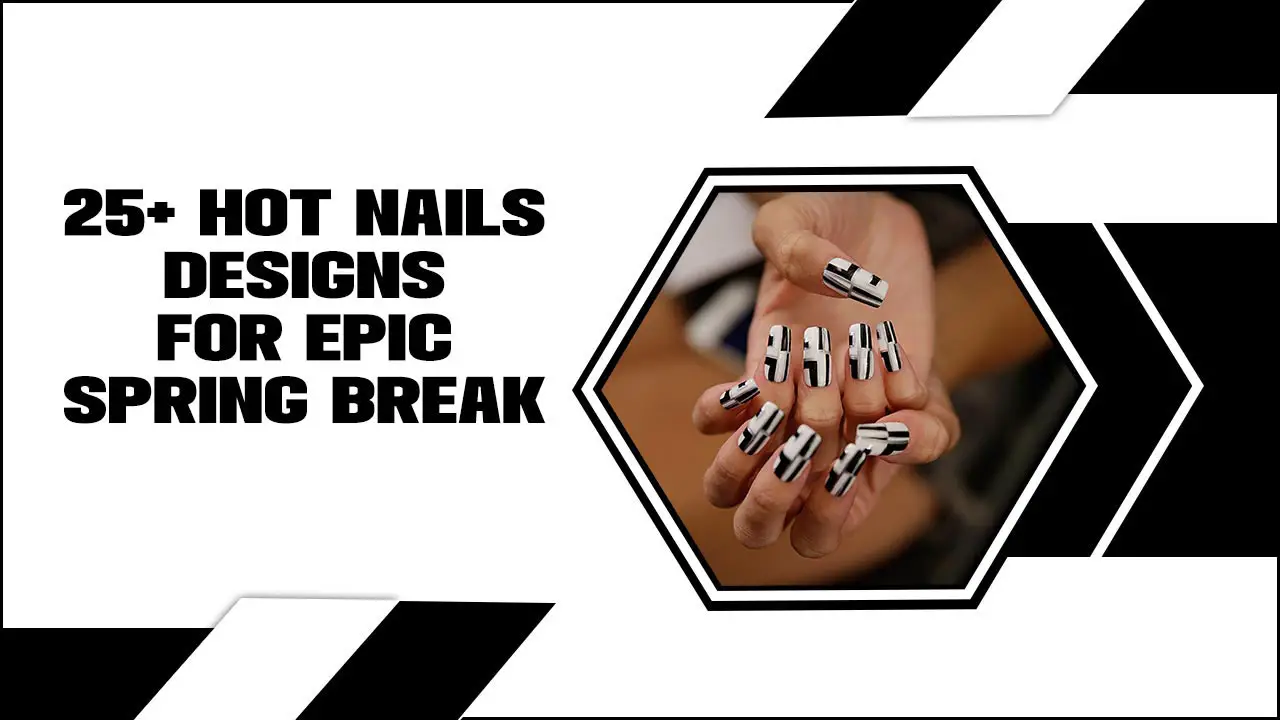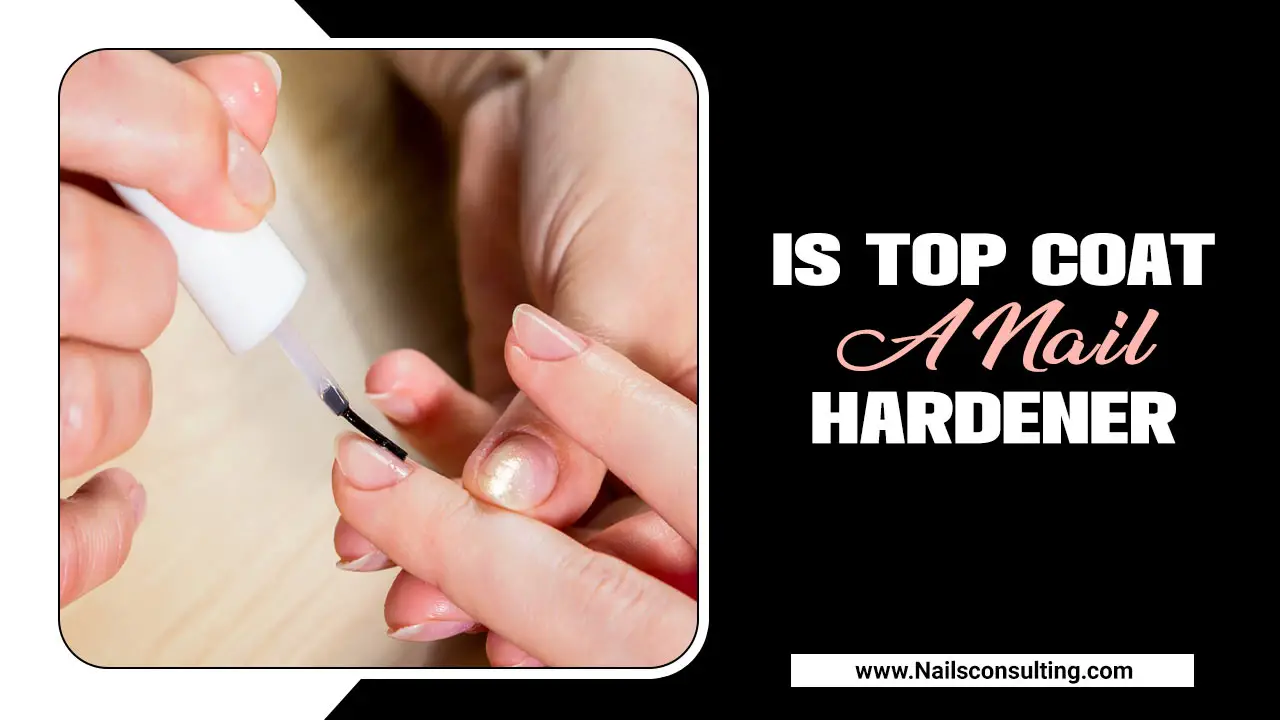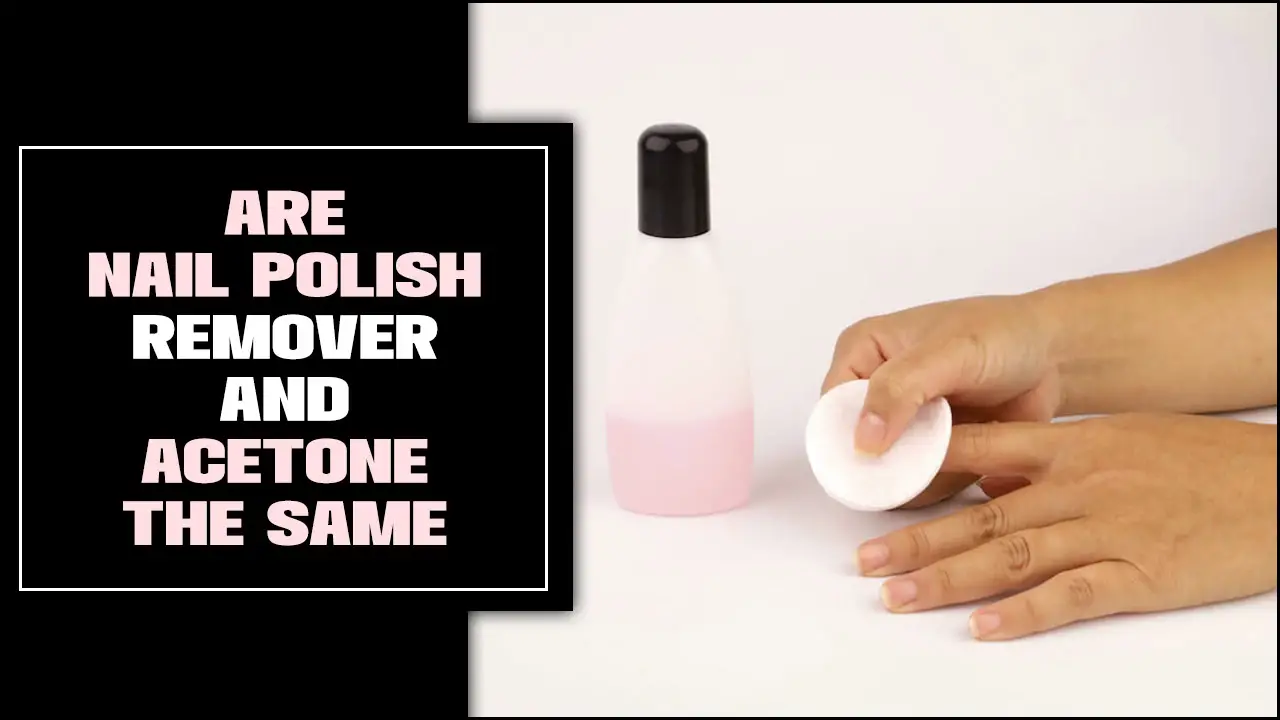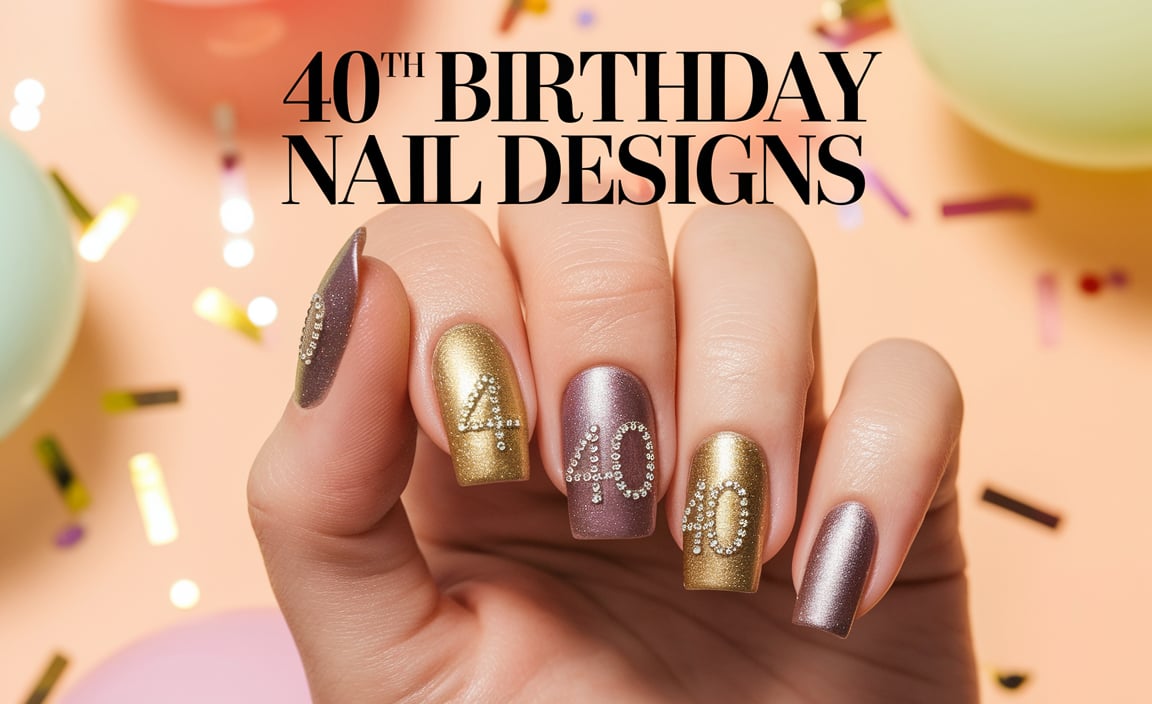Floral nail designs for spring weddings are the perfect way to add a touch of romance and elegance to your bridal look. This guide offers simple, achievable ideas and essential tips for beginners wanting beautiful, spring-inspired nails.
Spring wedding season is here, and with it comes a wave of beautiful floral trends! As a bride, every detail matters, right down to your fingertips. But if you’re new to nail art, the idea of intricate floral designs might feel a little overwhelming. Don’t you worry! Creating stunning floral nails for your big day can be fun and totally doable, even if you’re just starting out. We’re going to walk through everything you need to know, from choosing your blooms to getting that perfect finish. Soon, you’ll have gorgeous nails that perfectly complement your spring wedding vibe!
Why Floral Nails are Perfect for Spring Weddings
Spring is synonymous with new beginnings, fresh blooms, and a vibrant burst of color. What better way to capture that essence than with floral nail designs for your spring wedding? They echo the natural beauty of the season, adding a delicate and romantic touch that’s both timeless and incredibly chic. Unlike bold, statement nails, floral designs often lean towards softer palettes and intricate details, making them a versatile choice that can complement a wide range of wedding dress styles and themes.
The beauty of floral nails lies in their adaptability. Whether your wedding has a rustic charm, a classic elegance, or a bohemian spirit, there’s a floral design to match. Think subtle, watercolor florals for a dreamy look, or more detailed, hand-painted roses for a touch of vintage romance. They’re not just pretty; they’re a statement of personal style and a beautiful nod to the season.
Choosing Your Spring Wedding Floral Nail Design
Selecting the perfect floral design is part of the fun! Consider these factors to help you decide:
- Wedding Theme & Colors: Does your wedding have a specific color scheme? Incorporating those colors into your floral nail art can create a cohesive look. For a whimsical garden wedding, pastels might be ideal. For a more formal affair, classic white and blush florals on a nude base could be stunning.
- Your Wedding Dress Style: A minimalist dress pairs well with delicate, understated floral details. A more elaborate gown might be perfectly complemented by slightly bolder, yet still elegant, floral accents.
- Your Personal Style: Are you naturally drawn to bold statements or subtle elegance? Choose a design that reflects your personality. You want to feel like you on your wedding day!
- Complexity vs. Time: Be honest about your nail art skill level (or the time you have available to practice!). Some designs are simpler than others. It’s always better to aim for a beautifully executed simple design than a rushed, imperfect complex one.
Let’s look at some popular floral nail design ideas perfect for spring brides:
1. Delicate Ditsy Florals
These tiny, scattered floral patterns are incredibly charming and easy to achieve. They’re perfect for the minimalist bride or as a subtle accent on one or two nails.
- Base Color: Soft nudes, milky whites, pale pinks, or sheer beiges work best.
- Floral Colors: Tiny dots or strokes of pink, lavender, blue, or even a touch of gold or silver.
- Application: Use a fine-tipped brush, dotting tool, or even the tip of a toothpick to create small petals and centers. Space them randomly across the nail.
2. Watercolor Blooms
This ethereal design mimics the soft, blended look of watercolor paintings. It’s romantic, dreamy, and very on-trend.
- Base Color: Typically a clean white or off-white, allowing the watercolor effect to pop.
- Floral Colors: Soft pinks, peaches, blues, and purples are blended together directly on the nail using a damp brush and gel polish or acrylic paint.
- Technique: This requires a bit of practice to get the blending right. You can use specialized watercolor inks or simply manipulate wet gel polish colors.
3. French Tip Florals
A modern twist on the classic French manicure. Instead of a plain white tip, imagine delicate floral accents appearing on or alongside the French tip.
- Base Color: A sheer nude or pink.
- French Tip: Can be white, blush, or even a soft metallic.
- Floral Detail: Small buds, leaves, or vines painted along the curve of the French tip or peeking out from underneath.
4. Single Accent Bloom
A statement floral design on one or two accent nails (like the ring finger) can be incredibly impactful without being overwhelming.
- Base Color: A solid color that complements your wedding palette, or a classic nude/white.
- Floral Style: This could be a larger rose, a cluster of peonies, or even a minimalist single daisy.
- Placement: Focus the bloom on the center or one corner of the accent nail.
5. Pressed Flower Effect
Emulate the delicate beauty of real pressed flowers using nail decals or hand-painting techniques.
- Base Color: Clear, milky white, or a very pale pastel.
- Design: Use high-quality floral nail stickers that look like real pressed flowers, or meticulously paint delicate flowers and leaves.
- Top Coat: A glossy top coat is essential to seal the design and give it that polished, professional finish.
Essential Tools for Floral Nail Designs
Even for simple designs, having the right tools makes a world of difference. You don’t need a professional salon setup; a few key items can help you create beautiful floral nails at home.
Basic Tool Kit:
- Nail Polish & Gel Polish: Choose colors that complement your wedding theme. Gel polish offers more durability and a high-shine finish, which is excellent for weddings.
- Base Coat & Top Coat: Essential for protecting your natural nails and ensuring your design lasts. A good top coat should be non-wipe for gel manicures to keep them glossy. You can find high-quality options at retailers like Ulta.
- Fine-Tipped Nail Art Brushes: These are crucial for painting delicate lines, small petals, and details. Look for brushes with synthetic bristles.
- Dotting Tools: These come in various sizes and are perfect for creating small dots that can form flower centers or petals.
- Nail Polish Remover & Cotton Pads: For cleaning up mistakes and prepping nails.
- Cuticle Pusher/Orange Stick: To gently push back the cuticles for a clean canvas.
- Nail File & Buffer: To shape your nails and smooth the surface.
- Optional: Nail Decals/Stickers: A great shortcut for beginners or for achieving intricate looks quickly.
Table: Comparing Nail Art Application Methods
To help you visualize, here’s a comparison of popular application methods for floral nail art:
| Method | Description | Best For Beginners? | Pros | Cons |
|---|---|---|---|---|
| Hand-Painting (Polish/Gel) | Using fine brushes to draw directly onto the nail. | Requires practice, but simple designs are achievable. | High degree of control, endless design possibilities, can look very professional. | Steep learning curve for detailed work, can be time-consuming. |
| Dotting Tools | Using the rounded end of tools to create dots for petals/centers. | Yes! Very easy to use. | Great for creating simple flower shapes quickly, easy to master. | Limited to dot-based designs, may not achieve fine details. |
| Nail Art Stickers/Decals | Adhering pre-made floral designs onto the nail. | Yes! Extremely easy. | Fastest method, perfect for intricate designs without skill, consistent results. | Can sometimes look less natural, may lift at edges if not sealed properly, limited to available designs. |
| Stamping Plates | Using metal plates with etched designs and a stamper to transfer the pattern. | Moderate. Takes some practice to align and transfer perfectly. | Can achieve very intricate and detailed designs quickly, reusable plates. | Requires specific tools (stamper, scraper, plates), practice needed for perfect transfer. |
Step-by-Step Guide: Easy Ditsy Floral Nails
This is a fantastic design for beginners, as it’s forgiving and looks effortlessly chic.
Materials You’ll Need:
- Base coat
- Your chosen nude or pastel polish (e.g., a soft pink)
- White or light cream polish for the flowers
- A contrasting accent color (e.g., pale blue or lavender) for a few floral centers
- Fine-tipped nail art brush OR a dotting tool OR a toothpick
- Top coat
Steps:
- Prep Your Nails: Start by cleaning your nails. Push back your cuticles gently, file them to your desired shape, and buff the surface lightly to remove any shine. Apply a thin layer of base coat and let it dry completely.
- Apply Your Base Color: Paint two thin, even coats of your chosen nude or pastel polish. Let each coat dry thoroughly. This provides a smooth, clean canvas for your floral design.
- Create Your Flowers:
- Using a Fine Brush: Dip your brush into the white (or accent) polish. You can either make small dots for petal centers, followed by tiny petal shapes around them, or if you’re feeling adventurous, try painting tiny four-petal flowers.
- Using a Dotting Tool: Dip the smallest end of your dotting tool into the white polish. Make a few small dots on the nail, spacing them out. You can follow up with more dots to create a flower cluster, or add a tiny dot of a contrasting color in the center of some of your white dots.
- Using a Toothpick: Dip the tip of a toothpick into the polish. Create tiny dots in a circular pattern to form a flower. For a simpler look, just make random small dots across the nail.
- Add Detail (Optional): If you want a bit more dimension, use your accent color (like pale blue) to add a tiny dot in the center of some of your white flowers. You could also add a few tiny green dots for leaves if you like! Most importantly, keep the flowers small and scattered, not overcrowded.
- Let it Dry: Ensure your nail art is completely dry before moving to the next step. This is crucial to prevent smudging. For gel polish, cure each layer according to the manufacturer’s instructions.
- Apply Top Coat: Carefully apply a generous layer of top coat over your entire nail, including the floral design. This seals everything in, adds shine, and protects your beautiful work. For gel, this will be your final curing step.
This method is incredibly versatile. Experiment with different base colors and sparingly use your accent color to create a unique look for each nail.
Step-by-Step Guide: Simple Watercolor Blooms
This design looks impressive but can be surprisingly manageable with a little patience!
Materials You’ll Need:
- White or off-white gel polish (or regular polish if you’re careful!)
- A few complementary colors in gel polish or acrylic paint (e.g., soft pink, peach, lavender)
- A clean gel brush OR a regular nail art brush
- Nail cleaner/alcohol OR gel top coat (non-wipe) to use as a medium
- Top coat (gel or regular)
Steps:
- Prep and Base: Prepare your nails as usual (clean, shape, buff). Apply a good quality white or off-white base coat and cure thoroughly if using gel. You might need two coats for opacity.
- Apply the Medium: This is key to the watercolor effect.
- For Gel Polish: Apply a very thin layer of non-wipe gel top coat over the white base or use a bit of nail cleaner/alcohol rubbed onto the surface. This creates a surface where the colors will blend. Work quickly!
- For Regular Polish: Ensure your base polish is completely dry. You’ll then apply colors and blend them very carefully.
- Create the Blooms:
- Dip your brush into one of your chosen colors (e.g., pink). Lightly dab and swirl it onto the nail where you want a bloom. Don’t aim for perfection; think soft, blended shapes.
- Immediately, while the first color is still “wet” on the nail, pick up another color (e.g., peach) on your brush. Dab and lightly blend it into the first color. You’ll see the colors start to diffuse and create a watery effect.
- Add a third color (e.g., lavender) if desired, blending it gently. You can also add a tiny dot of a darker shade for depth.
- Blend and Refine: Use a clean brush (dampened slightly with alcohol if using gel, or clean and dry for regular polish) to softly blend edges or remove excess polish for a more delicate look. Think soft washes of color rather than sharp lines.
- Add Greenery (Optional): For a fuller look, you can add very delicate, wispy green strokes with a fine brush to suggest leaves. Keep these minimal so they don’t overpower the blooms.
- Cure/Dry: If using gel polish, cure your watercolor design under a UV/LED lamp according to the polish instructions. If using regular polish, allow it ample time to dry completely – this can take longer.
- Seal with Top Coat: Once fully dry or cured, apply a generous, smooth layer of top coat. This protects the design and gives it a beautiful, glossy finish. For gel, use a non-wipe top coat and cure it.
The key to watercolor nails is to embrace the fluidity and softness. It’s less about precise lines and more about creating an impressionistic, artistic effect.
Tips for Long-Lasting Wedding Nails
Your wedding day is long, and you want your gorgeous floral nails to look perfect from the ceremony to the last dance. Here are some tips to ensure longevity:
- Prep is Paramount: A thorough nail prep (cleaning, shaping, buffing, and pushing back cuticles) creates the best surface for polish adhesion.
- Use a Quality Base Coat: This creates a barrier between your nail and the polish, preventing staining and providing a smooth surface for polish application.
- Thin Coats are Best: Apply polish in thin, even layers. Thick coats take longer to dry and are more prone to chipping. Let each layer cure or dry completely before applying the next.
- Cap the Free Edge: When applying your color and top coat, brush a thin line of polish along the free edge (the tip) of your nails. This acts as a seal and helps prevent chips from the edge.
- Invest in a Good Top Coat: A high-quality top coat is your best friend for durability. For gel manicures, a good non-wipe top coat provides that extra shine and protection. Consider brands known for their longevity. The OPI GelColor system is a popular choice for salon-quality results at home.
- Avoid Water Exposure Immediately: After your manicure, try to avoid prolonged contact with water for the first 24 hours, as this can soften the polish and make it more vulnerable to damage.
- Carry a Mini Touch-Up Kit: For regular polish, a small bottle of your polish and top coat can be a lifesaver for any unexpected chips.
- Consider Gel or Polygel: If you’re seeking maximum durability and a high-shine finish that lasts weeks, gel or polygel extensions are excellent choices for a wedding.
Practicing Your Floral Nail Designs
The most important aspect of achieving beautiful wedding nails is practice! Don’t wait until the week of your wedding to try out these designs.
- Start Early: Begin practicing at least 4-6 weeks before your wedding. This gives you ample time to refine your techniques and discover what works best for you.
- Use Practice Sticks: Nail art practice sticks (small, curved plastic pieces that resemble nails) are fantastic for honing your skills without using your actual nails. You can buy them online or at beauty supply stores.
- Watch Tutorials: YouTube and Instagram are treasure troves of nail art tutorials. Search for “easy floral nail art” or “beginner wedding nails” and watch how different artists achieve various effects.
- Don’t Be Afraid to Mess Up: Mistakes are part of the learning process! Use nail polish remover and a fine brush to clean up slips. That’s what practice is for!
- Simplify if Needed: If a design proves too challenging, don’t
>




